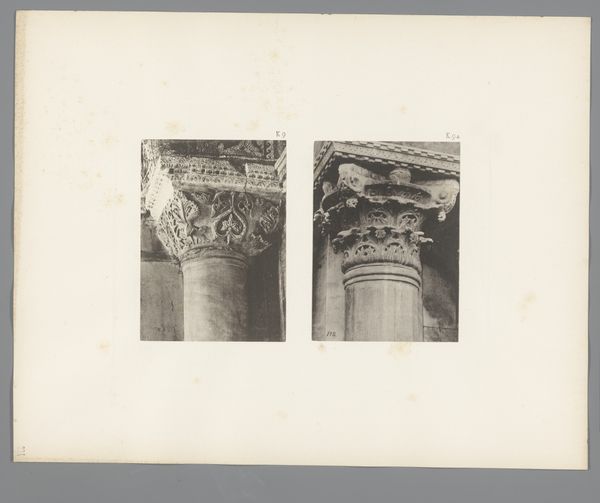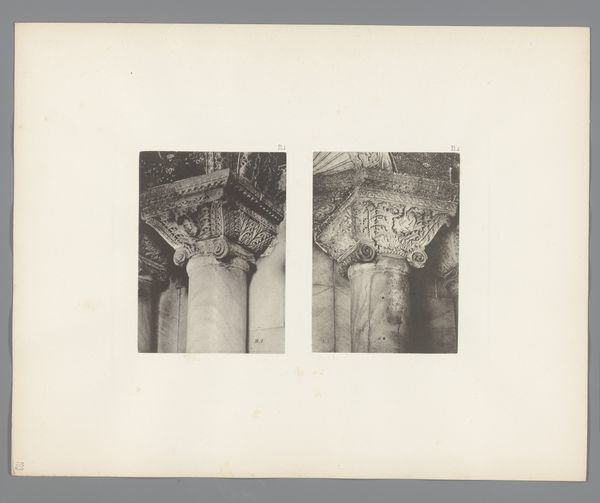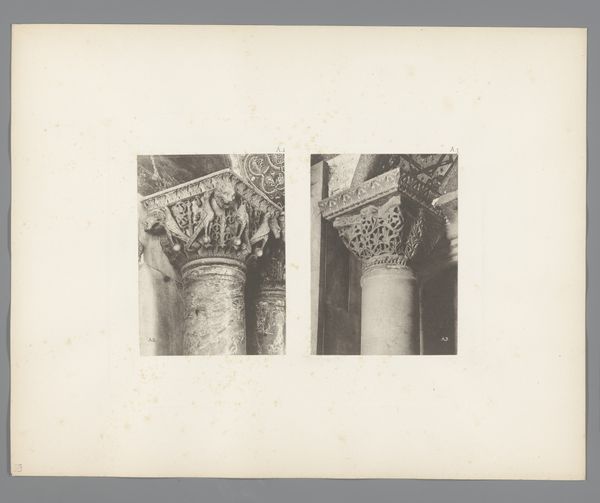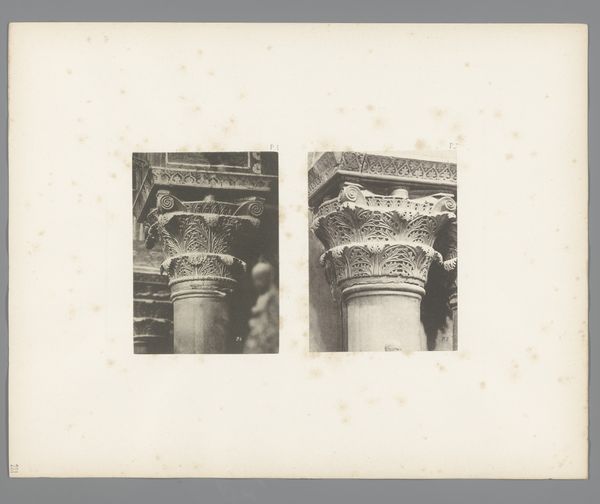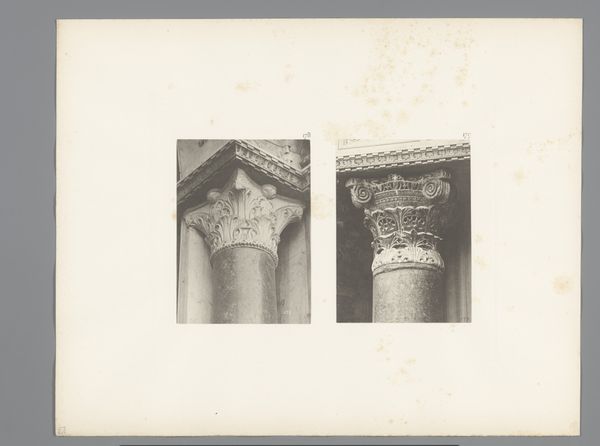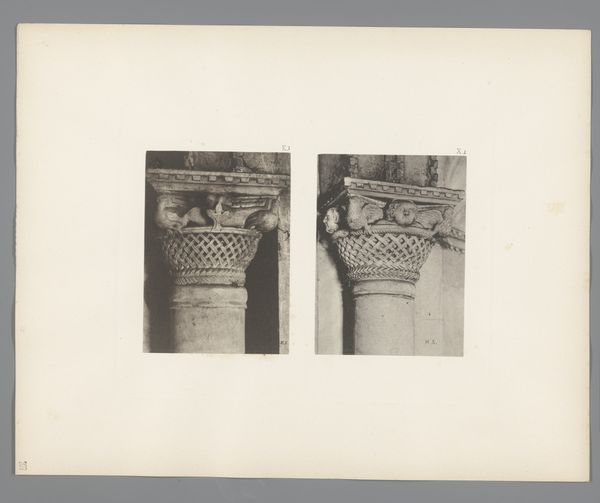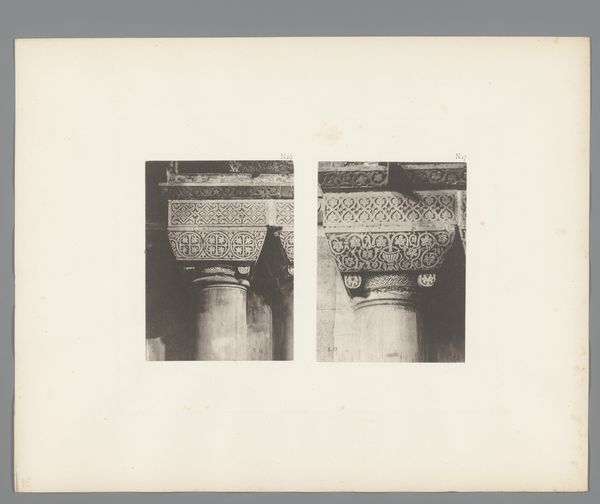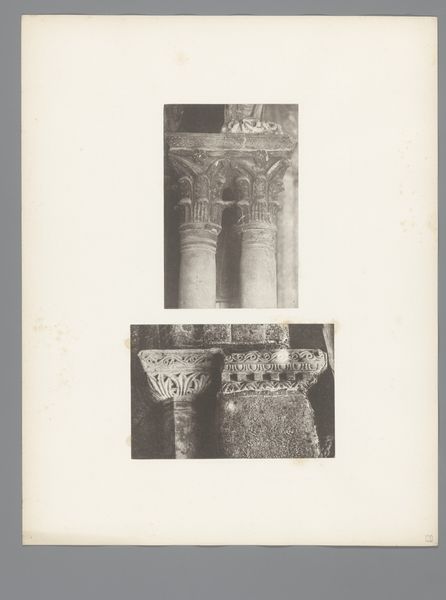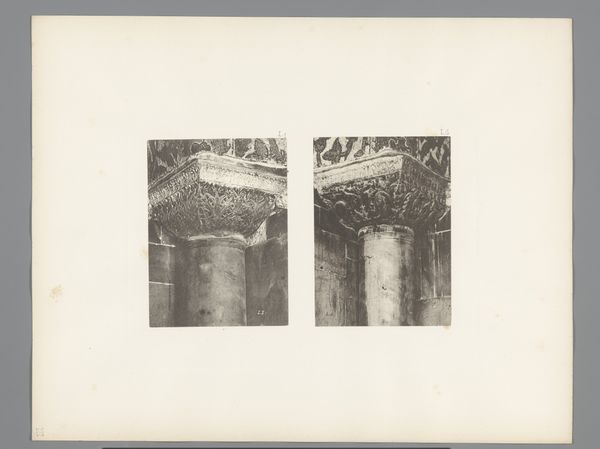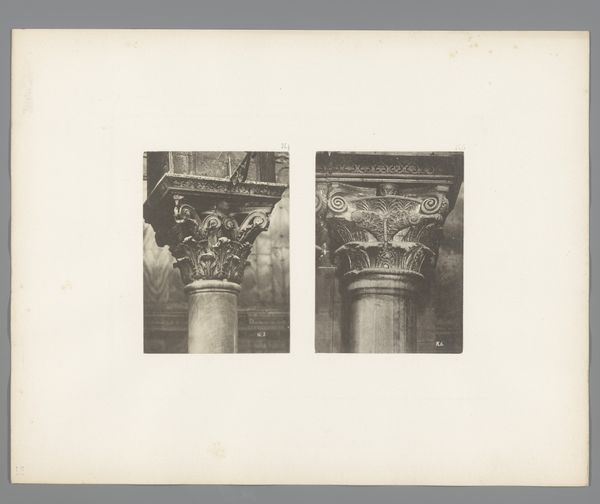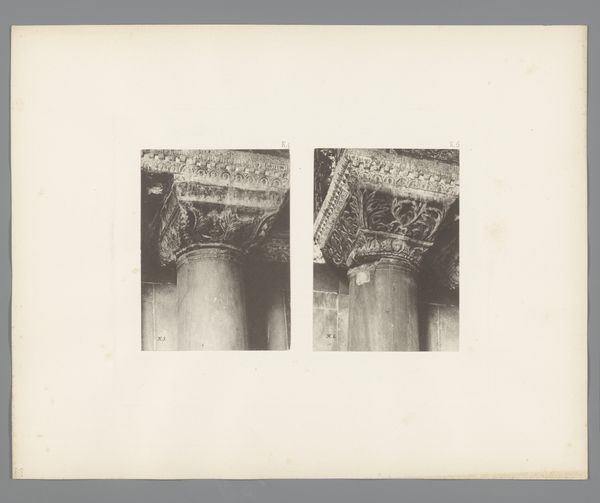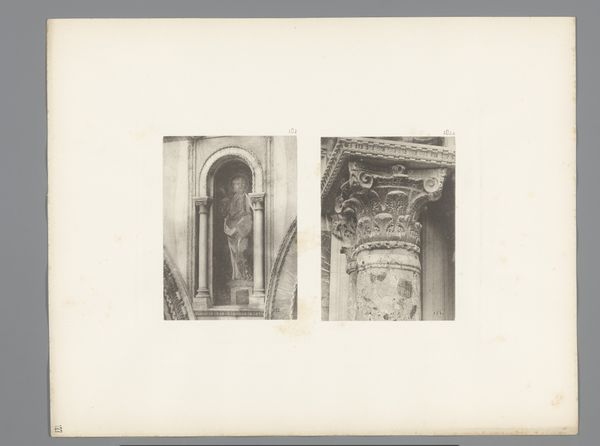
print, photography, gelatin-silver-print
# print
#
photography
#
geometric
#
ancient-mediterranean
#
gelatin-silver-print
#
italian-renaissance
Dimensions: height 311 mm, width 396 mm
Copyright: Rijks Museum: Open Domain
Curator: Before us, we have a gelatin silver print made before 1885 by Carl Heinrich Jacobi titled "Two images of capitals of San Marco in Venice." Editor: My first thought is how stoic they appear, these lonely architectural details presented on a pale, stark ground. I see geometry alongside natural forms and it hints at complex ideas about order versus nature, all cast in muted silver tones. Curator: Let's consider the socio-historical context. Venice, at this time, was deeply entwined with notions of national identity and heritage. Reproducing these capitals, which represent the wealth and power amassed through centuries of trade and colonization, serves as a deliberate assertion of Venice's historical significance within the formation of Italian national identity. Editor: Exactly! These architectural fragments carry a potent symbolic weight. The Corinthian acanthus leaves suggest cycles of rebirth, endurance, and prosperity. Capitals aren’t just decorative, they visually link heaven and earth in a grand cosmological order, representing foundations of belief and civilization. Curator: And who has access to this history matters. In this period, photography democratized art. Yet, access to the Grand Tour and its symbols was stratified along class lines. Jacobi’s print provides a mediated experience. We should ask: what layers of power, access, and interpretation are embedded here? Editor: It also speaks volumes that Jacobi chose to isolate these architectural elements. It removes them from the wider cathedral context which turns them into distinct artifacts of art and culture, emphasizing certain narratives tied to the Venetian Renaissance and obscuring others. They remind us of past triumphs, a golden era seen through a particular lens. Curator: This focus creates a sort of controlled viewing. While showcasing classical beauty, it inadvertently directs the observer’s gaze to exclude Venice's multifaceted colonial past. In selecting these images and controlling circulation, narratives get constructed regarding whose cultural legacies get celebrated versus those ignored. Editor: The image truly encourages reflection beyond face value. The choice of gelatin silver print adds to it—the way the light dances on these ancient stones creates an ethereal almost dreamlike presence. I wonder what narratives these silent columns could tell if they could speak, about shifting beliefs and social strata? Curator: These visuals highlight the complicated intersections of nationalism, accessibility, power, and cultural storytelling imbedded within photographs—prompting essential questions on inclusivity within artistic, historical, and socio-political dialogue. Editor: Indeed, the visual symbolism serves not just as a document, but as a layered meditation, open for discussion across diverse views.
Comments
No comments
Be the first to comment and join the conversation on the ultimate creative platform.
